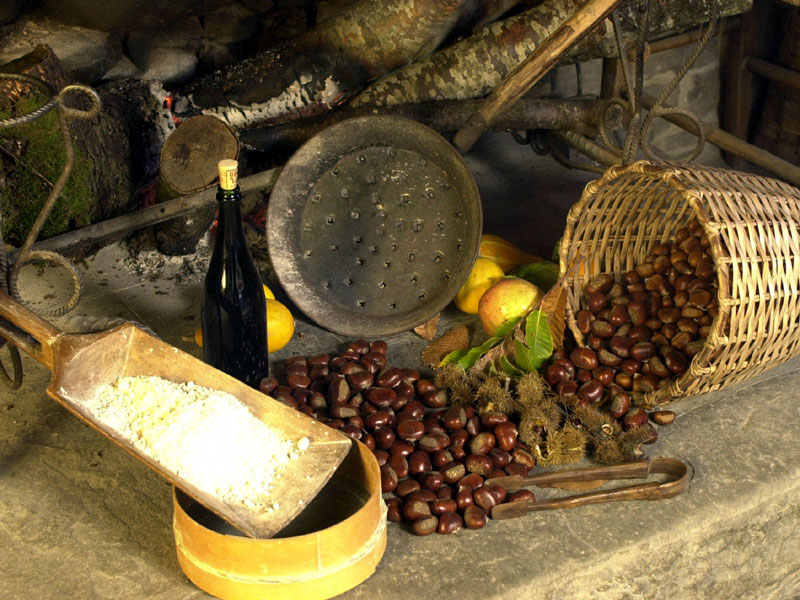Parco Nazionale delle Foreste Casentinesi, Monte Falterona, Campigna
www.parcoforestecasentinesi.itMugello Chestnut (or Marrone)
History
The first news about Mugello chestnut (or marrone) date back to the Roman Age. However, it became particularly important in the economy of the early Middle Ages, to the extent that it was quoted in the registers of the Florence Toll already in the 14th century. The Florence Land Register talks about Mugello as a land with "...great abundance of big and fine chestnuts...". At the end of the 19th century, the railway line led to a strong development of the export activities. After a period of crisis in the 1950s, the product is experiencing today a new and interesting development. In 1996, Marrone del Mugello obtained the PGI label (Protected Geographical Indication). In 1998, Associazione Marrone del Mugello I.G.P. was established in order to safeguard this product and its by-products.
Current Production Area in the Park
Londa, San Godenzo.
Description
The fruit has a medium-large size, and it has an elliptic-egg shape with a depressed top. Brown peel with darker streaks and considerable inner hairiness. The seed has a delicate and sweet taste, a cream color, and is covered with a thin brown film.
Product Seasonality
The product is on the market from 5th October and can be found as a fresh product, fresh and processed, dried with shell, dried without shell, and flour.









